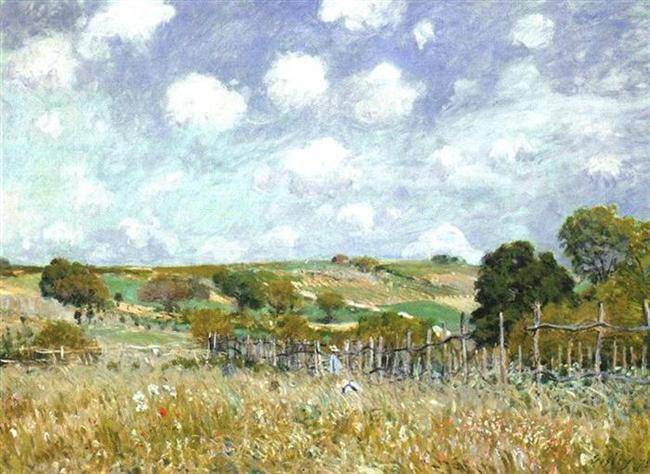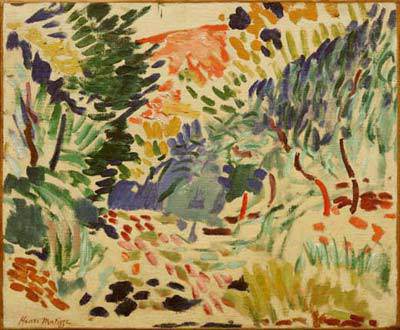Alfred Sisley · Meadow

Alfred Sisley (England / France, 1839-1899), 1875. Oil on canvas, 54.9 × 73 cm (21.61 × 28.74 in). National Gallery of Art, Washington
A French-born English artist, Alfred Sisley (1839-1899) is, along with Claude Monet, Camille Pissarro and Berthe Morisot, the most “pure” representative of Impressionism. He was above all a landscape painter. Less gifted than Monet and less versatile than Pissarro, he is particularly remarkable for his excellent use of color and his strong representations of the sky.
The 1870s were a complicated decade for Alfred Sisley, without any financial support after the collapse of his family business as a result of the Franco-Prussian War. But it was also during this period when the artist created his best works, like the “Chemin de la Machine, Louveciennes” or his famous series of “Flood at Port-Marly”.
“Meadow” is the quintessential Impressionist landscape: spontaneous, free, apparently unfinished. The composition is simple, divided into three different planes separated by the fence and the horizon. The foreground is dominated by grasses and flowers, created with loose brush strokes. Behind these we see a rural landscape, and above it a magnificent sky, reminiscent of the cloud studies of the English painter John Constable.
G. Fernández – theartwolf.com
Follow us on:


